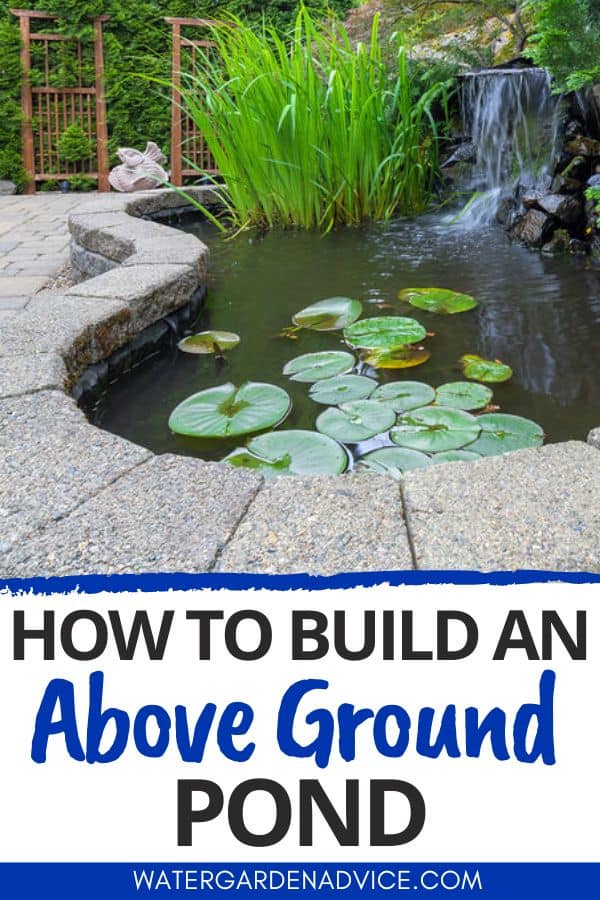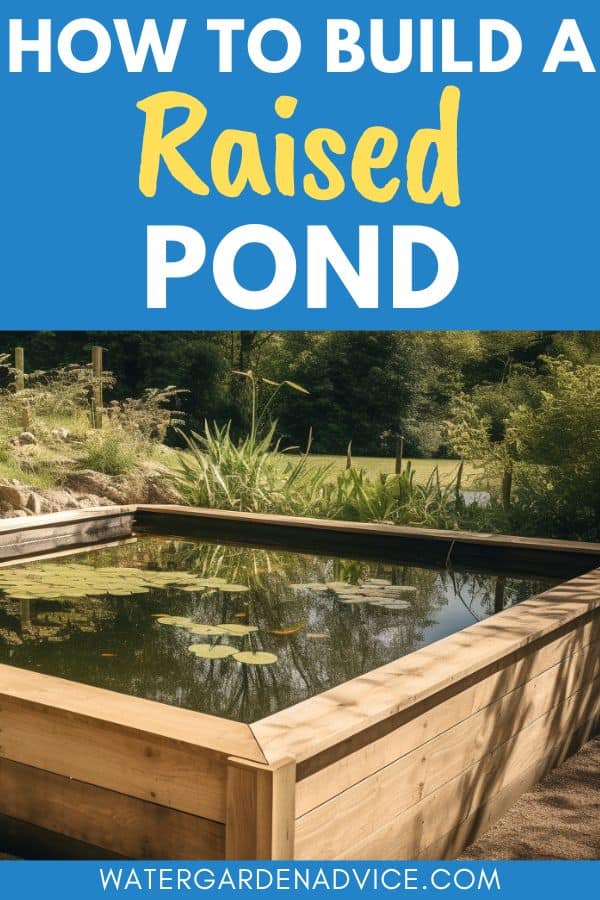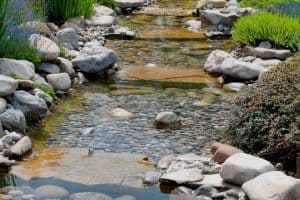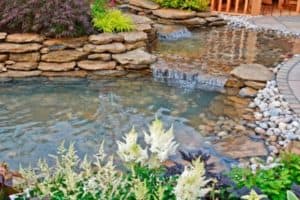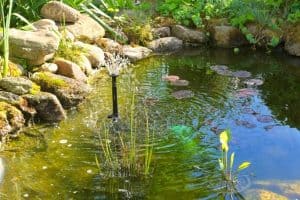If you’ve ever dreamed of having a pond in your backyard but don’t have the space or budget for an in-ground pond, an above ground pond might be the perfect solution.
Building an above ground pond in your backyard can be a rewarding weekend project that can transform your outdoor environment and there’s no digging required!
Whether you’re interested in a koi pond, water garden, or wildlife pond, this guide will provide step by step instructions on how to build an above ground pond that will last for years.
This post contains affiliate links. Please read the disclosure for more info.
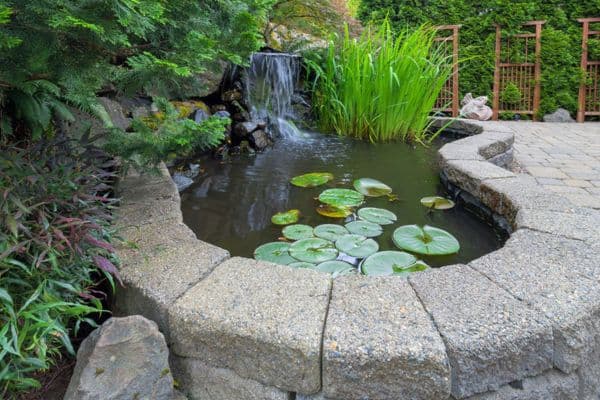
Planning Your Above Ground Pond
Size and Shape
When planning your above ground pond, the first thing to consider is the size and shape of the pond.
Consider the space available in your yard, as well as your desired pond depth.
A depth of 18 to 24 inches (45 to 60 cm) is recommended for most backyard ponds.
The shape can be round, oval, rectangle, or any other shape that suits your preferences, but keep in mind that irregular shapes will require extra effort to build.
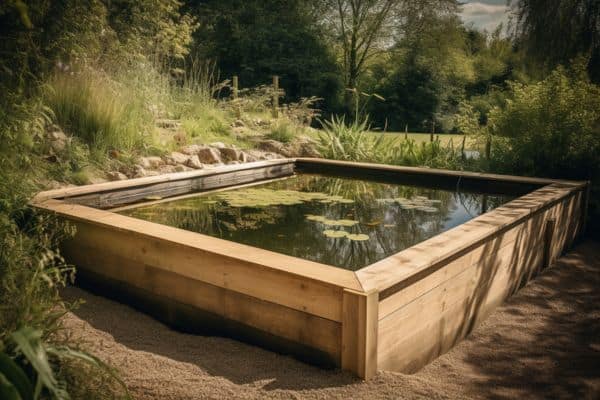
Using a Raised Pond Kit
One of the easiest ways to build an above ground pond is to use a free standing pond kit.
These kits can be assembled and set up in just a few hours and include everything you need to get started.
This Half-Moon shaped raised pond kit holds 89 gallons (336 litres) of water and comes with a pond filter and pump to keep the water clean and clear.
If you’re looking for a larger free standing pond, this hexagonal design holds 172 gallons (651 litres) of water and has large panels so you can watch the fish swimming around.
Location Selection
When choosing a location for your raised pond you’ll need a spot that has:
- Access to a power source – You’ll need electricity for your pond pump, filter, and possibly lights.
- Proximity to trees – Avoid placing your pond directly under trees, as falling leaves can create maintenance issues and tree roots can puncture the pond liner.
- Visibility – Choose a location that allows you to enjoy the pond from various areas, such as your patio or favorite seating spot.
- Sun and shade – Your pond should receive a balance of sun and shade during the day. Too much sun can lead to excessive algae growth, while too little sun can hinder plant growth.
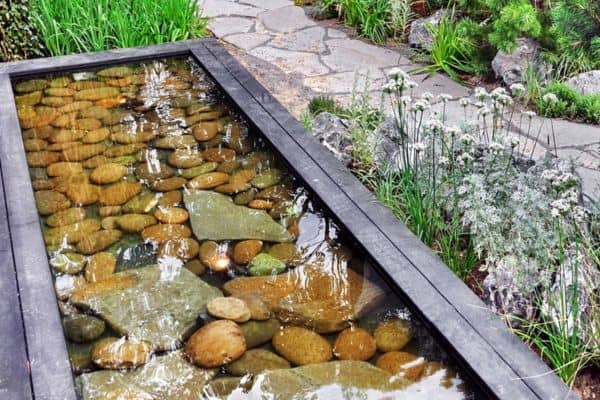
Materials and Tools Needed
Basic Tools
When constructing the pond, you’ll need some essential tools to help you through the process:
- Measuring tape, for determining your pond’s size and layout
- Rake, for smoothing and levelling the ground before installing the liner
- Level, to ensure the pond frame is straight and even
- Power saw, if you’re using timber for the frame
- Hammer or mallet, for securing frame materials and stakes
Pond Liner
A quality pond liner is crucial for preventing water from seeping into the ground.
The most commonly used liners are EPDM rubber and PVC.
Both are durable, flexible, and resistant to punctures. It’s best to choose a liner that is slightly larger than your pond’s dimensions to accommodate any adjustments during installation.
Measure the pond’s length, width, and depth to calculate the size you need.
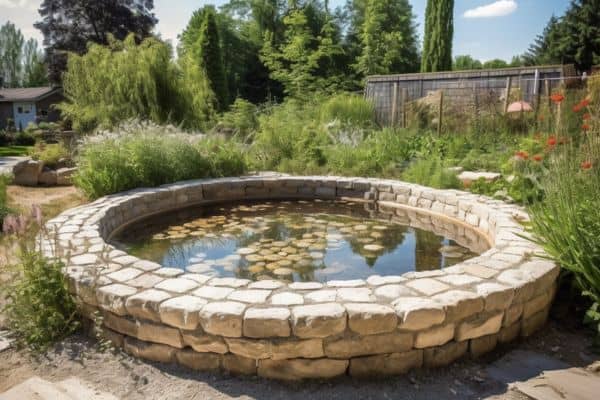
Pond Frame
Your above-ground pond will need a sturdy frame to secure the liner and contain the water pressure.
You can construct the frame by using materials such as concrete blocks, bricks, or timber.
Once you’ve built the frame and put the liner in place, drape the liner over the top of the frame.
Fill the pond with water and smooth out any creases in the liner as the pond fills up.
Once the pond is full of water you can trim off the excess liner and secure it with another layer of timber, brick or stones.
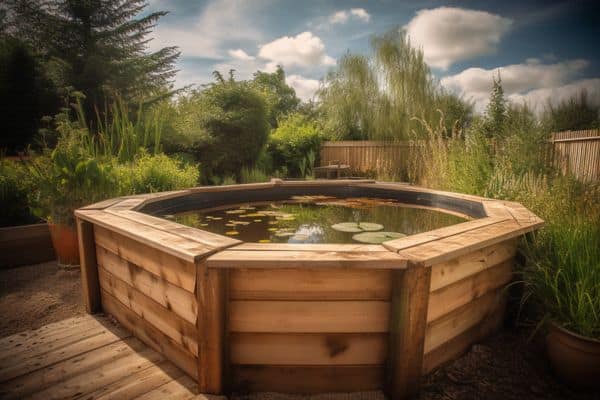
Pump and Filter System
Proper circulation and filtration are vital for maintaining water quality, providing oxygen for fish and plants, and preventing algae growth.
Be sure to select a pump with enough power to circulate the pond’s entire volume at least once per hour, and choose a filter suitable for your pond’s size and the number of fish you plan to add.
Adding Plants and Fish
Once your above-ground pond is built, it’s time to make it a thriving ecosystem by adding plants and fish.
Plants not only make your pond more enjoyable to look at, they also help to maintain the water quality and provide a healthier environment for any living creatures in your pond.
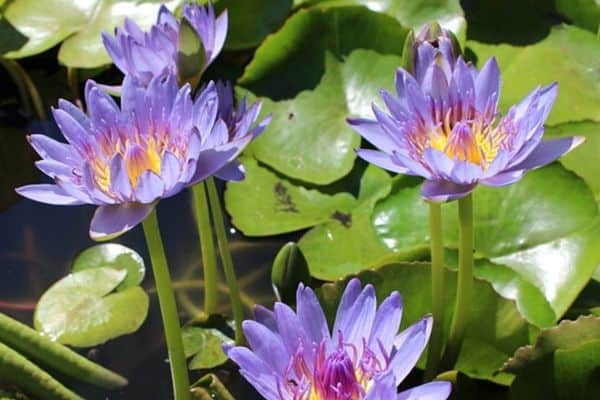
Choosing Pond Plants
When choosing plants, it’s essential to consider factors such as sunlight exposure, water depth, and the size of your pond.
A diverse mix of plants is recommended, including submerged and floating plants.
Some popular options include water lilies, water hyacinths, and irises.
To give your plants the best chance of survival, be sure they are suitable for your climate and plant them according to their specific requirements.
Introducing Fish
Adding fish can bring your pond to life and create a healthier ecosystem.
When introducing fish, consider the size of your pond, the water temperature, and the compatibility of the fish species you choose.
Goldfish are a popular choice for small ponds due to their hardiness and adaptability to various water conditions.
Other options include common minnows and guppies.
To help your fish thrive, test the water quality using a pond test kit to ensure it is within the recommended pH range, ideally between 7.2 and 7.8. [1]
When it’s time to introduce the fish, be sure to acclimate them to the pond water temperature gradually to reduce stress and improve their chances of survival.
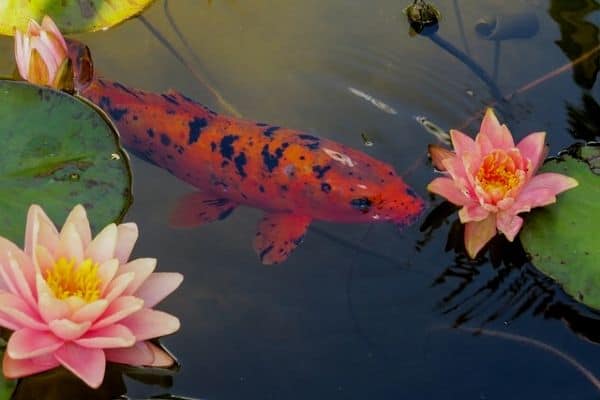
Maintaining Your Above Ground Pond
Once your above ground pond is built, it’s crucial to maintain it properly to ensure it stays clean and balanced.
Regular Cleaning
To maintain the cleanliness of your pond, it’s essential to perform regular cleaning tasks like:
- Removing debris, such as leaves or twigs, from the surface of the water.
- Cleaning the filtration system and replacing filter media as needed.
- Trimming aquatic plants to prevent overgrowth.
Managing Algae Growth
Algae growth can become problematic in small raised ponds if it’s not properly managed.
To reduce the likelihood of algae overgrowth you can:
- Introduce more aquatic plants to compete with algae for nutrients.
- Limit the amount of sunlight reaching the pond by installing a shade sail or using blue pond dye.
- Introduce algae-eating organisms, such as snails or fish.
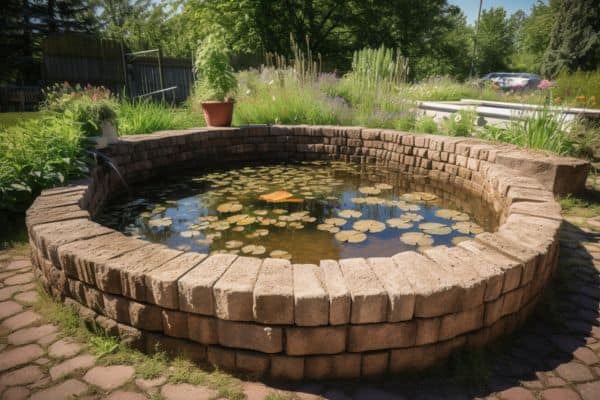
RELATED ARTICLES
- How To Add Tadpoles To Your Pond
- How To Stop Your Pond Overflowing
- How Much Sunlight Do Backyard Ponds Need?
So there are my tips for building a DIY above ground pond in your backyard.
With proper care and maintenance, your raised pond will be a beautiful addition to your outdoor space for years to come.
Do you have any questions about above ground pond construction? Let me know in the comments below.
Are you on Pinterest? I have boards dedicated to Garden Ponds and Water Gardens that you may find interesting.
